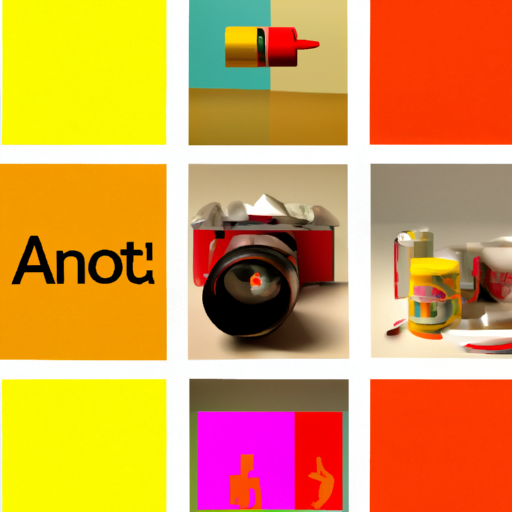
-
Table of Contents
- The Art of Collaborative Design Projects
- 1. The Power of Collaboration
- 2. Key Elements of Successful Collaborative Design Projects
- 2.1 Clear Goals and Objectives
- 2.2 Diverse and Complementary Team
- 2.3 Effective Communication
- 2.4 Clearly Defined Roles and Responsibilities
- 2.5 Iterative and Feedback-driven Process
- 3. Case Studies: Successful Collaborative Design Projects
- 3.1 Apple’s Design Team
- 3.2 The High Line Park, New York City
- 4. The Future of Collaborative Design Projects
- 4.1 Virtual Collaboration
- 4.2 Design Thinking
- 4.3 Artificial Intelligence
- 5. Conclusion
The Art of Collaborative Design Projects

Collaborative design projects have become increasingly popular in various industries, from architecture to software development. This approach brings together individuals with diverse skills and perspectives to work together towards a common goal. By leveraging the collective intelligence and creativity of a team, collaborative design projects can lead to innovative solutions and improved outcomes. In this article, we will explore the key elements of successful collaborative design projects and discuss how they can be implemented effectively.
1. The Power of Collaboration
Collaboration is more than just working together; it is a mindset that values the contributions of each team member and fosters an environment of trust and open communication. When it comes to design projects, collaboration can bring numerous benefits:
- Enhanced creativity: By bringing together individuals with different backgrounds and perspectives, collaborative design projects can generate a wider range of ideas and solutions. This diversity of thought can lead to more innovative and creative outcomes.
- Improved problem-solving: Collaborative design projects allow team members to pool their knowledge and expertise, enabling them to tackle complex problems more effectively. By leveraging the collective intelligence of the team, solutions can be found more efficiently.
- Increased efficiency: When team members collaborate, tasks can be divided and executed simultaneously, leading to faster project completion. Additionally, collaboration reduces the risk of errors and rework, as multiple perspectives can catch potential issues early on.
- Enhanced learning: Collaborative design projects provide opportunities for team members to learn from each other. By working together, individuals can share their knowledge and skills, fostering professional growth and development.
2. Key Elements of Successful Collaborative Design Projects
While collaboration can bring significant benefits, successful collaborative design projects require careful planning and implementation. Here are some key elements to consider:
2.1 Clear Goals and Objectives
Before embarking on a collaborative design project, it is essential to establish clear goals and objectives. This ensures that all team members are aligned and working towards a common purpose. Clear goals provide a sense of direction and help guide decision-making throughout the project.
2.2 Diverse and Complementary Team
A successful collaborative design project requires a team with diverse skills and perspectives. By bringing together individuals with different backgrounds, expertise, and experiences, the team can benefit from a broader range of ideas and approaches. It is important to ensure that team members’ skills and strengths complement each other to maximize collaboration.
2.3 Effective Communication
Effective communication is crucial for successful collaboration. Team members should be encouraged to share their thoughts, ideas, and concerns openly. Regular meetings and discussions should be scheduled to keep everyone informed and engaged. Additionally, the use of collaboration tools and technologies can facilitate communication and ensure that information is easily accessible to all team members.
2.4 Clearly Defined Roles and Responsibilities
Each team member should have clearly defined roles and responsibilities within the collaborative design project. This helps avoid confusion and ensures that everyone knows what is expected of them. Clearly defined roles also promote accountability and enable efficient task allocation.
2.5 Iterative and Feedback-driven Process
Collaborative design projects often involve an iterative process, where ideas are continuously refined and improved based on feedback. Regular feedback sessions should be conducted to gather input from team members and stakeholders. This feedback-driven approach allows for continuous improvement and ensures that the final design meets the project’s objectives.
3. Case Studies: Successful Collaborative Design Projects
Let’s take a look at two case studies that highlight the success of collaborative design projects:
3.1 Apple’s Design Team
Apple is renowned for its innovative and user-centric designs, and a significant part of its success can be attributed to its collaborative design process. Apple’s design team, led by Jony Ive, brings together individuals from various disciplines, including industrial design, software engineering, and user experience. By fostering collaboration and cross-functional communication, Apple has been able to create iconic products that seamlessly integrate hardware and software.
3.2 The High Line Park, New York City
The High Line Park in New York City is a prime example of a successful collaborative design project. The park, built on a historic elevated railway, involved collaboration between landscape architects, urban designers, and community stakeholders. By engaging the local community and incorporating their input, the design team was able to create a unique and vibrant public space that has revitalized the surrounding neighborhood.
4. The Future of Collaborative Design Projects
As technology continues to advance, the future of collaborative design projects looks promising. Here are some trends that are shaping the future of collaboration:
4.1 Virtual Collaboration
Virtual collaboration tools and platforms are enabling teams to collaborate remotely, breaking down geographical barriers. With the rise of remote work and distributed teams, virtual collaboration is becoming increasingly important. These tools allow team members to collaborate in real-time, share files, and communicate effectively, regardless of their physical location.
4.2 Design Thinking
Design thinking, a human-centered approach to problem-solving, is gaining popularity in collaborative design projects. This approach emphasizes empathy, experimentation, and iteration. By adopting design thinking principles, teams can better understand user needs and create solutions that truly address their pain points.
4.3 Artificial Intelligence
Artificial intelligence (AI) is also playing a role in collaborative design projects. AI-powered tools can assist designers in generating ideas, analyzing data, and automating repetitive tasks. By leveraging AI, teams can focus on higher-level thinking and creativity, while AI handles more mundane tasks.
5. Conclusion
Collaborative design projects have the potential to unlock innovation and drive better outcomes. By embracing collaboration, organizations can tap into the collective intelligence and creativity of their teams. Clear goals, effective communication, diverse teams, and iterative processes are key elements of successful collaborative design projects. As technology continues to evolve, virtual collaboration, design thinking, and AI will shape the future of collaborative design. By harnessing the power of collaboration, organizations can create impactful and user-centric designs that meet the needs of their target audience.
